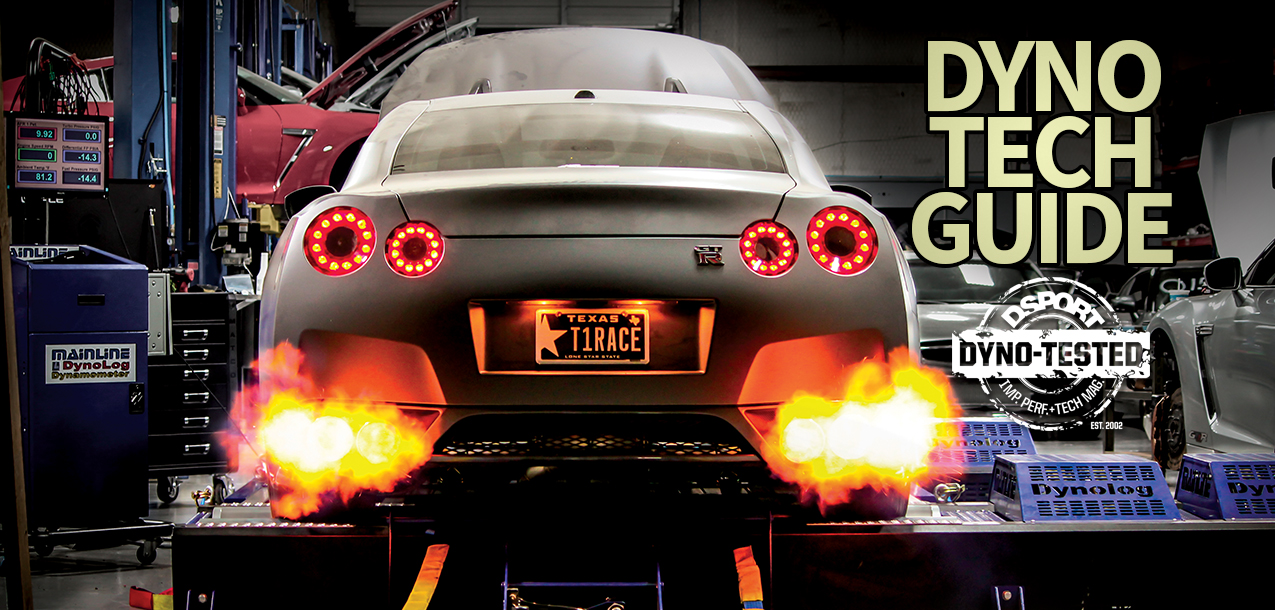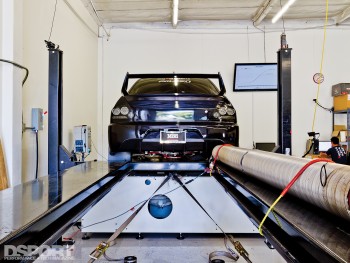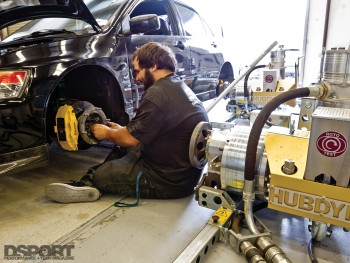Nearly 20 years ago, I was fresh out of college and working for Turbo & High-Tech Performance magazine. Back then, so little was known about import performance. There was no information and no resources to turn to as no one had pushed import performance as we would. The racers, enthusiasts and manufacturers that pioneered import performance would have never made such progress had it not been for the chassis dyno.
DSPORT Issue #135
In 1996, Dynojet paid a visit to our magazine headquarters for a demo. After a couple pulls with a project car on a portable two-wheel-drive Dynojet 248, we were instantly hooked. We believed this was something that every manufacturer and tuning shop needed to have. The old “248” set a new standard for repeatable results which was critical to product development and testing. The dyno was priced right and quickly became the industry standard for product testing. While workhorse first- generation dynos (like the 248) can still be found in the field, it’s the current-generation of dynos that are truly impressive. Multiple loading modes, improved data acquisition and AWD compatibility are just a few of the technologies that allow tuners the opportunity to extract more power and reliability. Today’s chassis dynos are easier on engines, deliver more consistent results and capture more data than ever before.
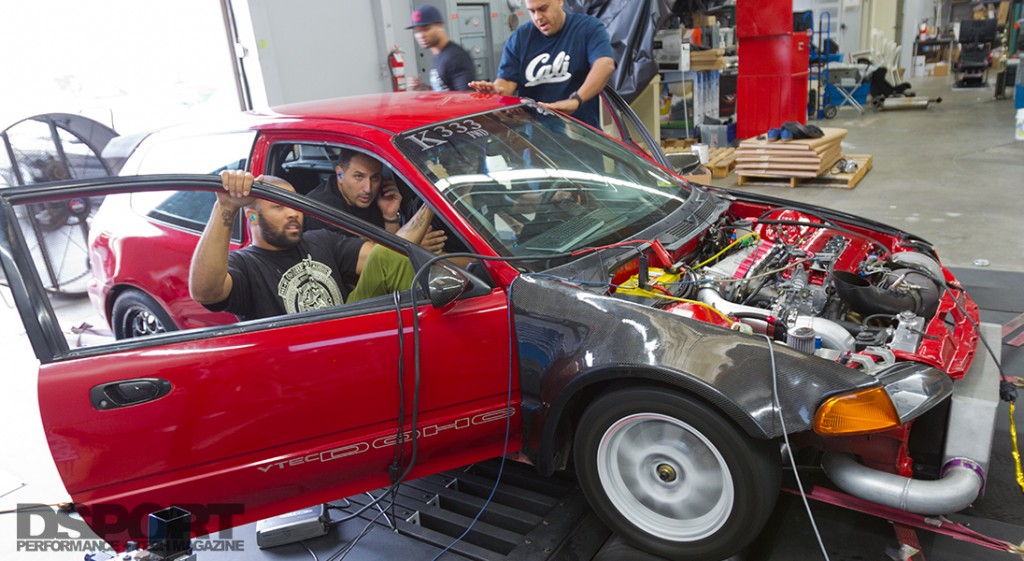
To celebrate what the chassis dyno has done for our industry, DSPORT has decided to honor the chassis dyno with a Dyno Tuning Guide. Our first DTG covers the basics of the technologies behind the dynos. From there, we explore the belief that dyno results across different dynos can be normalized. By focusing on the percentage gain, rather than the actual numbers, many believe you can compare the results from one dyno to another. Is that true? You are about to find out.
Photos and Text by DSPORT Staff
Choosing the Right Dyno
Ever try sharing your vehicle’s dyno numbers or graphs with friends, another tuner or on a forum? Be prepared to hear, “those numbers don’t mean anything because the dyno you used sucks” or “400 horsepower on that dyno is like 700 horsepower on a Dynojet.” The fact is that different dynos give different results. It’s really as simple as that. So are there good dynos and bad dynos? Of course, but it all depends on what makes a particular dyno good or bad to you. As a vehicle owner, repeatability, safe loading of the engine and data acquisition would likely be top priorities in choosing a dyno. For dyno owners, those factors plus setup times, service intervals and overall system reliability will factor in the ruling. Our aim is to shed some light on the aspects that need to be considered in choosing the right dyno. While sharing our knowledge, we also look to test a generally accepted notion. The notion suggests, “regardless of which dyno is used, a percent gain is a percent gain.” We’ll run two different test vehicles at two different boost pressures on five different dynos to test the theory.
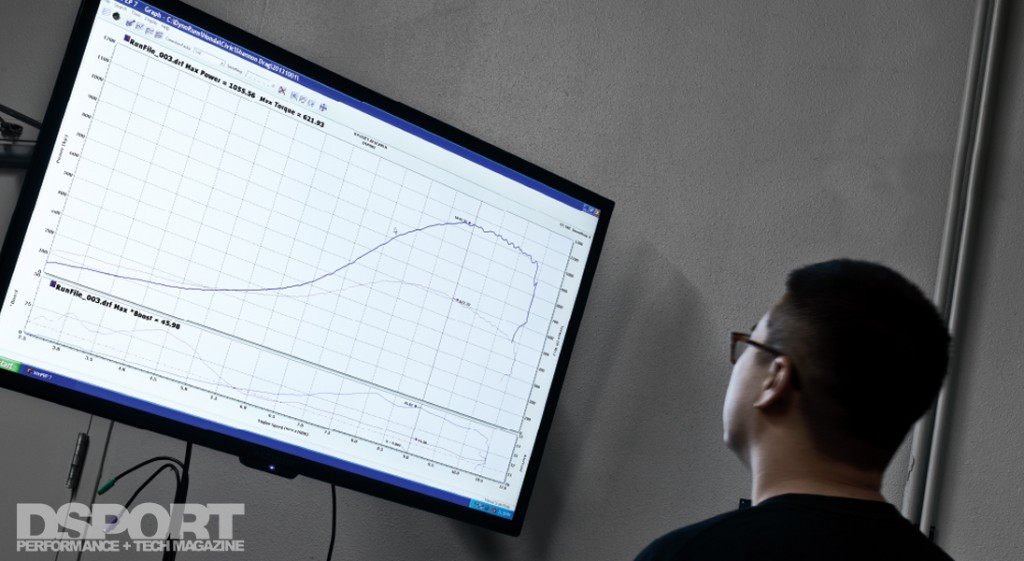
Chasing Accuracy, Accepting Repeatability
Accuracy doesn’t matter. Well that is an overstatement, but the reality is that repeatability is many times more important than accuracy in determining the value of a particular chassis dyno. It’s not what the dyno says, it’s that it says the same thing all the time. Let’s say that there is a vehicle that makes 400 horsepower to the wheels. If no changes are made to a vehicle, a dyno that says 300 horsepower at the wheels run after run is extremely valuable (even if the car is actually making 400 horsepower to the wheels). On the contrary, a dyno that reads 400 on one pull and then 380 on the next and 417 on the third run when no changes are made is pretty worthless. While the second dyno predicts a figure that is closer to the actual on average, it’s all over the map in delivering a repeatable result. Hence, a change that actually makes power or loses actual power may not show up on a dyno that doesn’t deliver repeatable result. Repeatability is King. Accuracy is always open for debate.
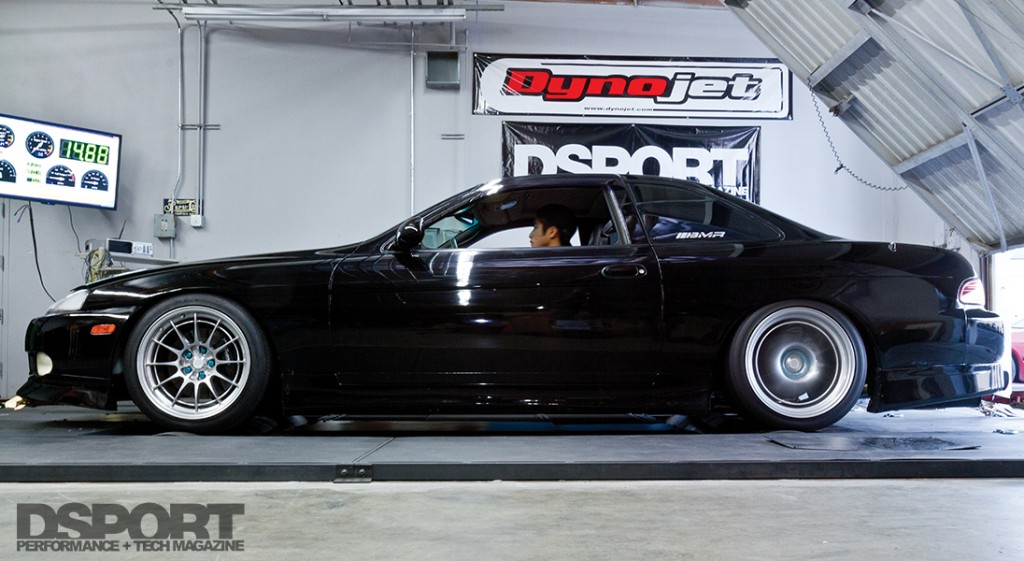
AWD dynos can also test FWD and RWD vehicles. The Dynojet AWD dyno requires the removal of a single shaft to switch into 2WD mode.
Two or Four, Linked or Not?
One obvious way to narrow down the field of dyno choices is to simply determine if an all-wheel-drive or two-wheel drive dyno will get the job done. While some AWD vehicles can be put into 2WD modes, it’s always best to simply use an AWD dyno for an AWD vehicle. AWD dynos can always accommodate 2WD vehicles too. However, the cost for AWD dynos is generally twice the cost of a 2WD unit. In selecting an AWD dyno, it’s important to note if the rollers or hubs are linked to ensure that the front and rear wheels spin at the same speed. Linked dynos avoid issues that will arise on certain models of vehicles that will burn up center differentials on unlinked rollers.
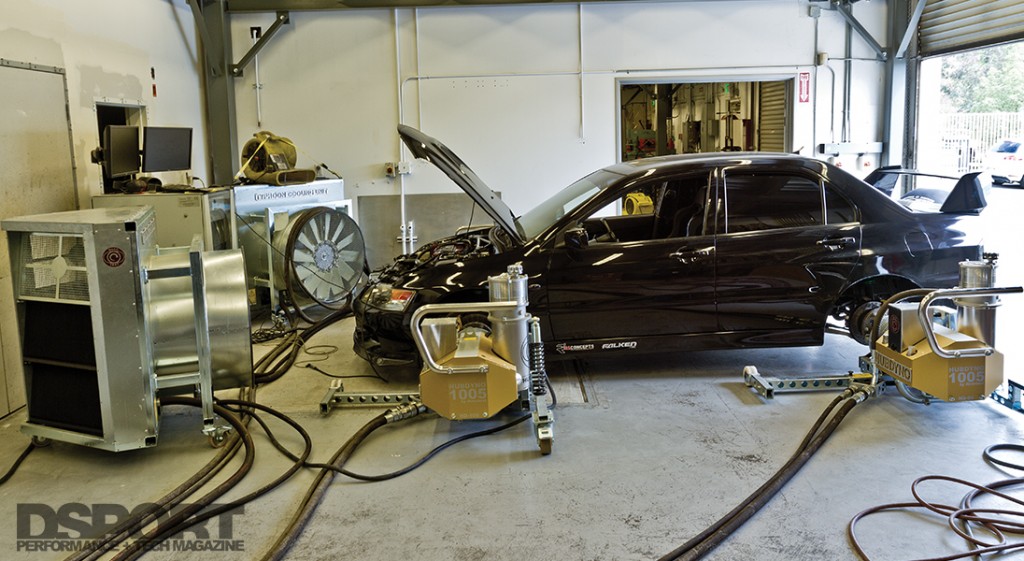
Some dynos vary the airflow from the fans as vehicle speed increases. Others run at fixed speeds.
Roller versus Hub
To measure the horsepower that would be delivered to the wheel, three types of interfaces can be used: single rollers, multi-rollers or hubs. Single or multiple rollers interface with the tire in a very similar fashion to the tire and the road. The contact patch of the tire makes contact with one or more rollers and delivers power to the roller through this contact point. Rollers have a few advantages over hub systems. Roller dynos feature faster setup and also account for the effects of the particular wheel and tire combination in use. However, roller systems do have a disadvantage. Roller systems can experience a loss of traction in high- power vehicles. With a hub system, the measurement error that arises from a loss of traction is eliminated. However, setup time is double or sometimes triple that of a roller system. But, hub systems are often portable and the only solution for tuning shops with limited space.
Hub dynos require additional setup time to remove wheels and attach the hub adapter to hook up the vehicle.
More to Rollers
With roller-based dynos, there are also other considerations that must be addressed. Whether a dyno is mounted above ground or in ground will have a direct effect on required shop space, setup time and the likelihood of wheelspin on the rollers. Above ground dynos often employ a ramp system that requires additional floor space. To avoid this, some above-ground dynos rely upon a lift system that adds to the overall cost. While these challenges are negated with an in-ground dyno, there are some advantages to above ground dynos. In addition to a much lower installation cost (no concrete pit needs to be constructed), above-ground dynos also offer superior strapping angles to put additional downward force on to the rollers. The additional downward strapping force can help delay the onset of wheel slippage to higher power levels.
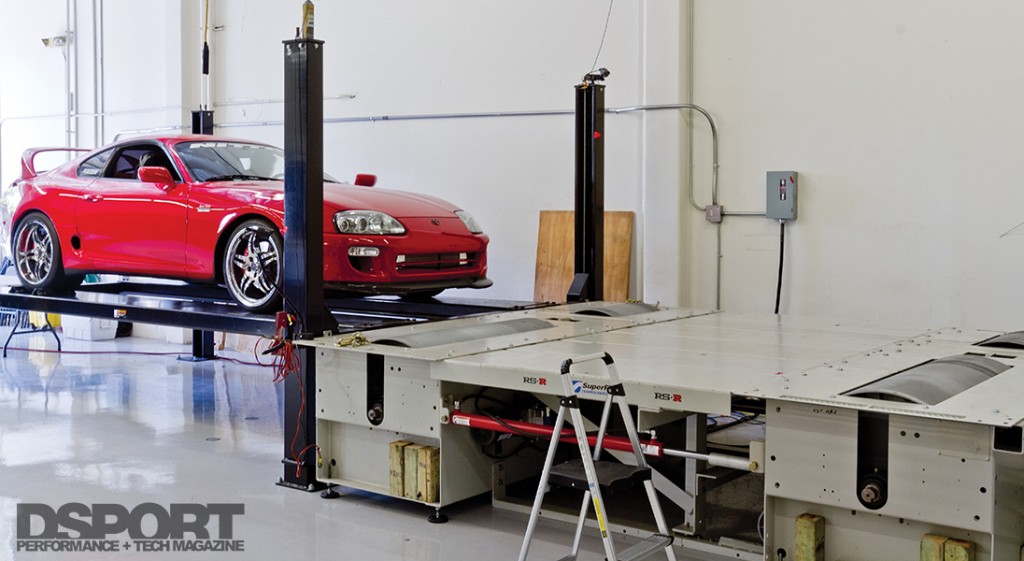
Inertia or Loading?
While the original Dynojet 248 was an exceptional performer in terms of repeatability and power handling, there were many critics of the dyno’s inertia-based loading. Unlike loading dynos that deliver a variable load to keep the engine or wheel speed constant (or at a set acceleration rate), an inertia dyno exerts a constant load as the engine accelerates. This dynamic loading is very similar to the loading that an engine sees on the road (absent of the additional loading from wind resistance as speeds increase). Inertia dynos have the advantage of delivering a more consistent load to the engine and performing a measurement quicker than most loading dynos. This cuts down on the engine coolant temperature and air temperature increases that can influence repeatability. However, inertia type dynos that do not have supplemental load cells cannot perform steady-state measurements. On loading dynos, the operator can set the dyno up to vary the load to keep engine speed constant. In doing so, mapping of the engine management system can be done much quicker and more thoroughly than on dynos that only offer inertial loading. Of course, the best of both worlds is delivered by inertia-based dynos with supplemental load cells. Load-cell dynos with well-designed inertia simulation loading modes can also deliver impressive results.
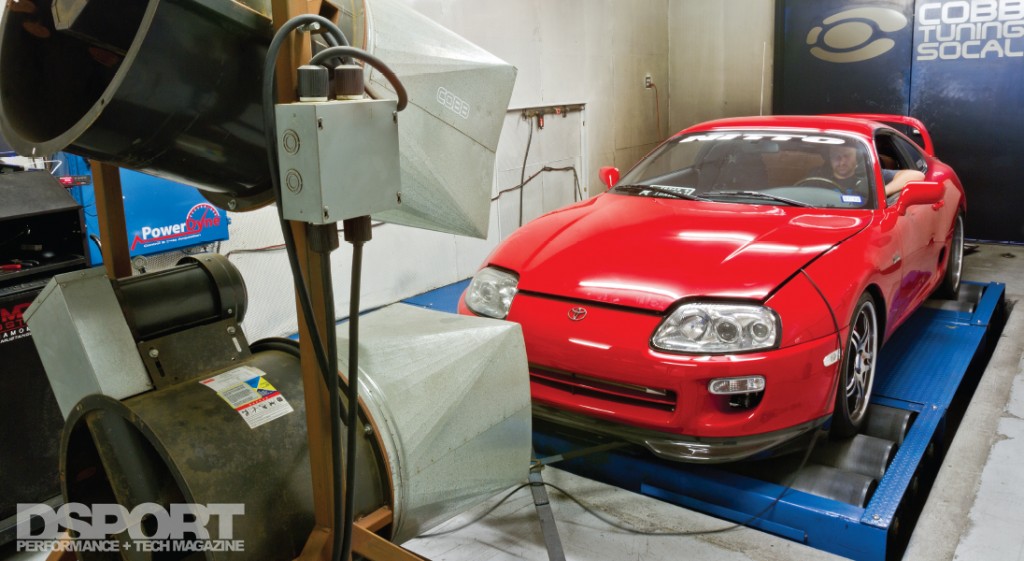 The Mustang dyno had a unique five-roller design. Three rollers in the front and two rollers in the rear are linked to a single load cell. No adjustments need to be made for longer or shorter wheelbase vehicles.
The Mustang dyno had a unique five-roller design. Three rollers in the front and two rollers in the rear are linked to a single load cell. No adjustments need to be made for longer or shorter wheelbase vehicles.
Corrected SAE or Uncorrected?
The majority of modern chassis dynos have built-in weather stations that record the ambient air temperature, barometric pressure and relative humidity during the test runs. Other dynos require that the operator manually take measurements and enter the results. In either case, these variables are needed to correct the results for the atmospheric conditions. The SAE (Society of Automotive Engineers) correction establishes the amount of power the engine should make at 29.23 inHg (barometric pressure), 77 degrees Fahrenheit and dry air. By using the SAE corrected results, a dyno session performed on a hot and dry day will be more in line with dyno results from a wet and cold day.
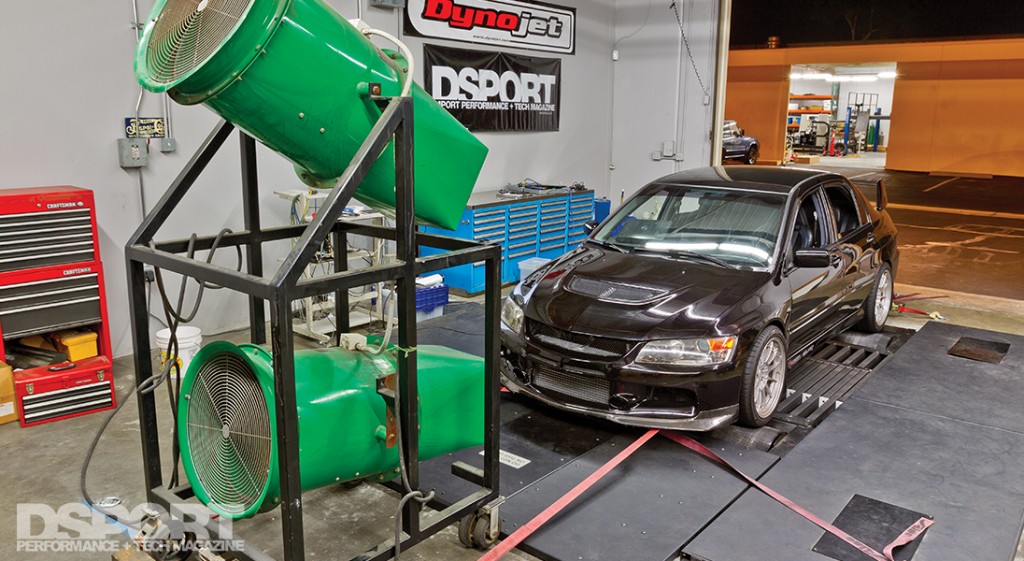
Calibration
Different dynos require different calibration schedules. Some inertia dynos may never require a calibration while some loading dynos might require frequent calibration for repeatable results. When a dyno’s software package allows for operators to change parameters, it’s possible for a dyno to be manipulated into delivering readings with poor accuracy. Sometimes those “dream killer” or “dream maker” dynos that have a reputation for reading real low or real high are simply the victims of someone molesting the calibration.
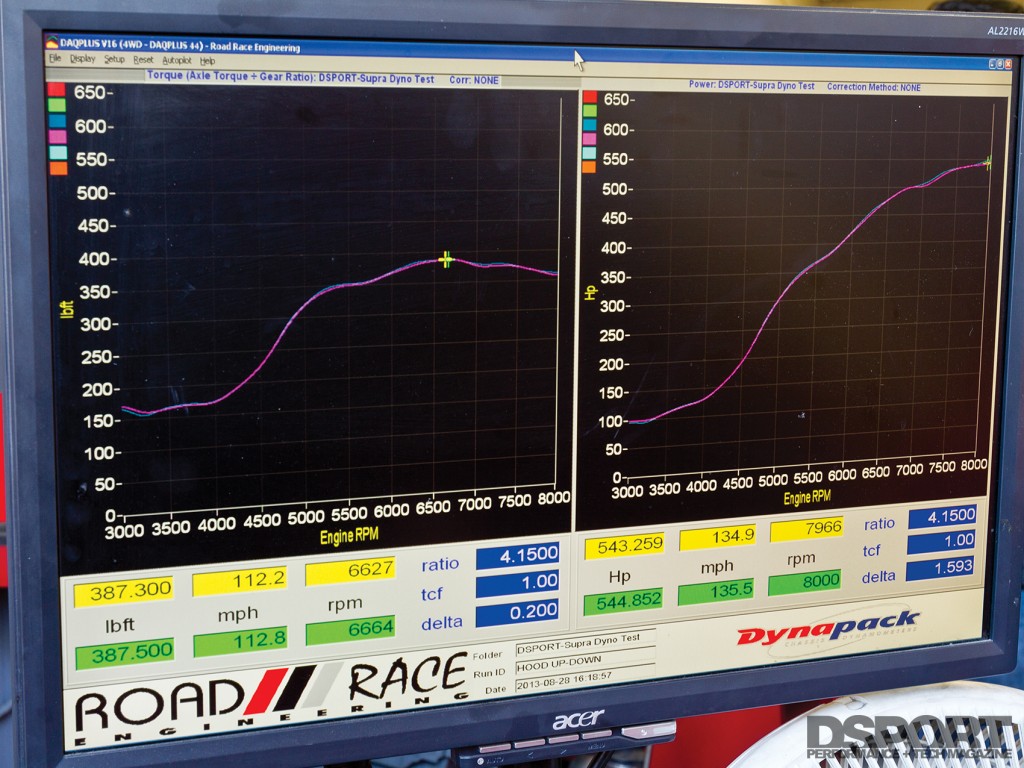
The Bottom Line
A SNAP-ON tool set in the hands of an incompetent mechanic may be of less value than a master mechanic armed with only a set of Harbor Freight specials. Finding the right dyno is important, but finding the right dyno operator and tuner is a must. There’s been great tuning performed on mediocre dynos and sub-par tuning performed on great dynos. At the end of the day, the right dyno lets the right tuner perform miracles.
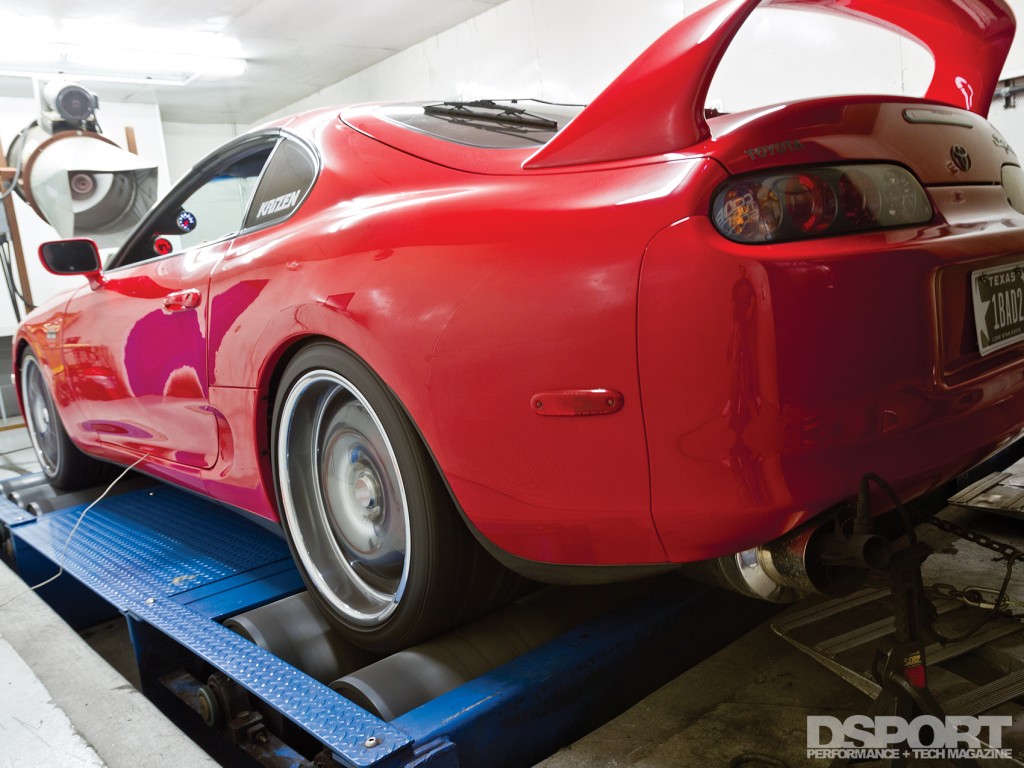
Dyno Tech Guide Part One: Choosing the Right Dyno
Dyno Tech Guide Part Two: The Test Cars
-1997 Toyota Supra
-2006 Mitsubishi EVO IX
Dyno Tech Guide Part Three: The Verdict + Dyno Showcase
-Dynojet 424xLC2
-Dynapack DP6000
-Mustang MD-AWD-500
-Rototest HUBDYNO® 1005
-Superflow AutoDynTM 30 AWD


